Abstract
5-Hydroxytryptamine (5HT) levels were measured in blood and tissues from pregnant mice. Blood levels remained constant during pregnancy and were the same as those in nonpregnant female mice. Placental levels of 5HT increased throughout pregnancy as did the foetal levels. The maternal blood volume of the placenta also increased with advancing gestation. 5HT levels were measured after treatment of the mother with 5HT, and the critical placental level of 5HT observed at about the time of death of the foetus was determined. The levels of 5HT in the placenta and foetus after treatment of the mother with several monoamine oxidase inhibitors were measured, and found to show no significant increase above the normal levels in these tissues. Treatment with cyproheptadine, a 5HT antagonist, did not delay parturition.
Full text
PDF
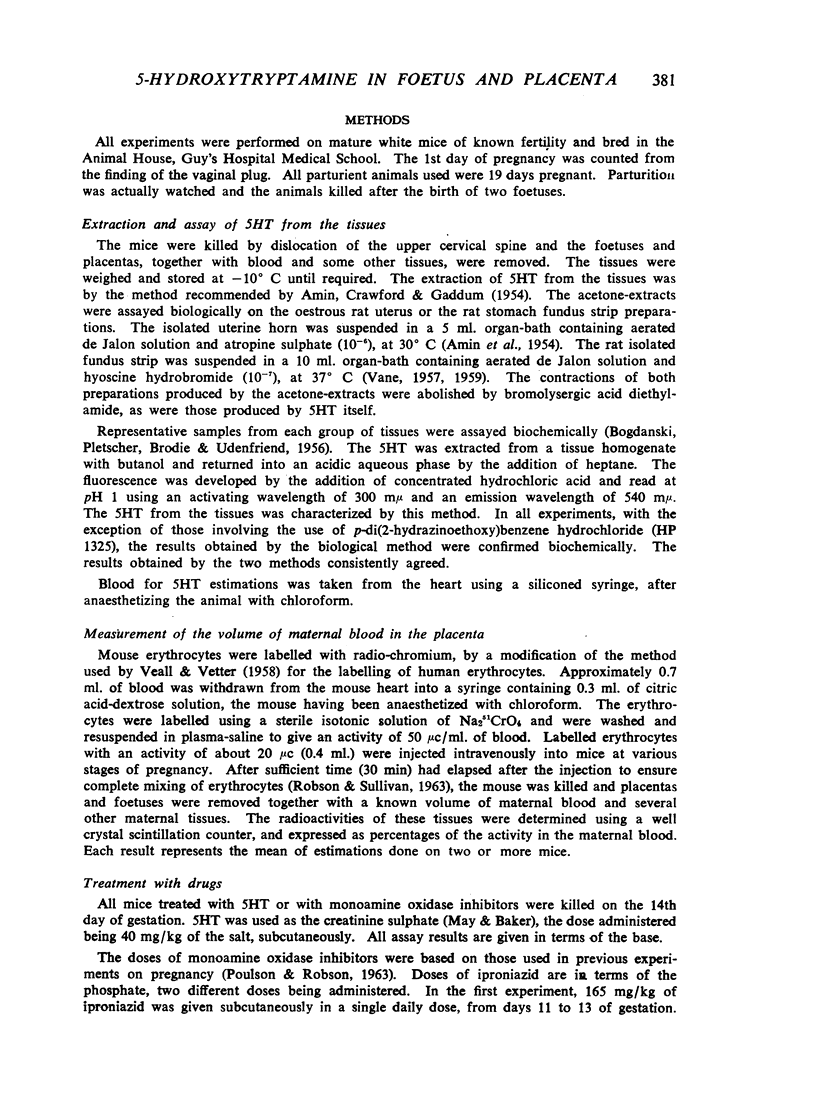
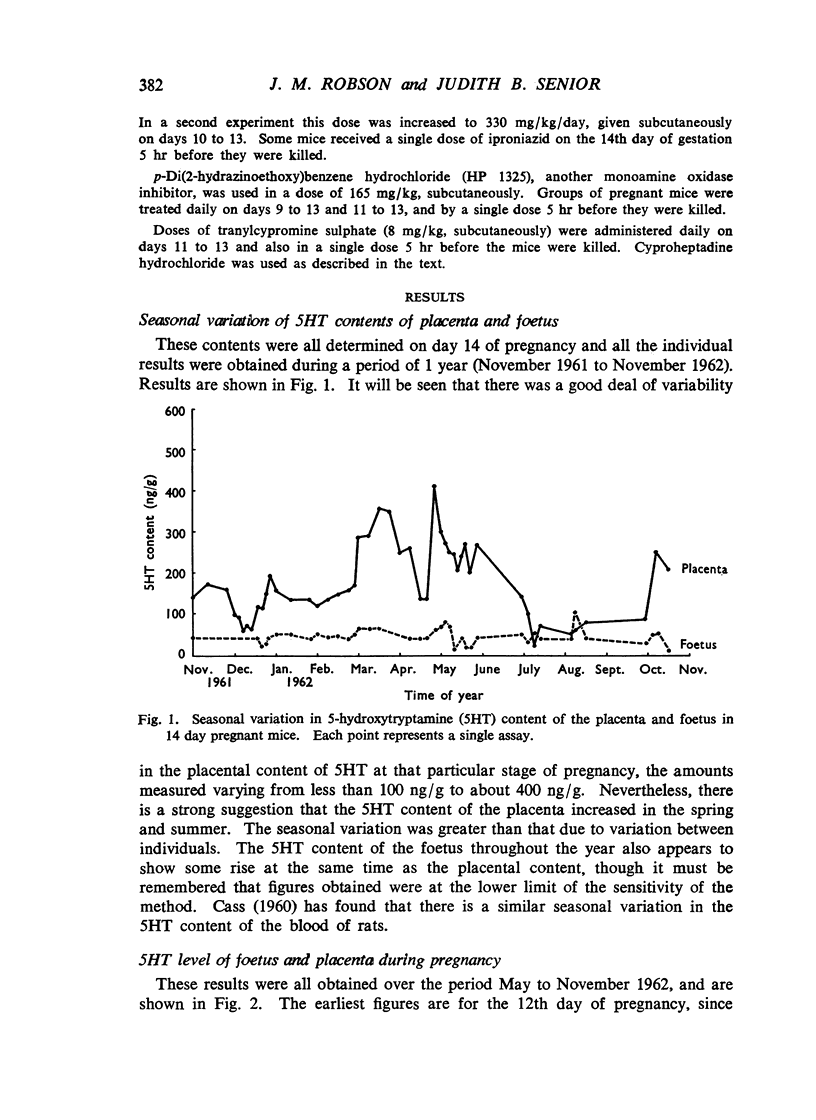

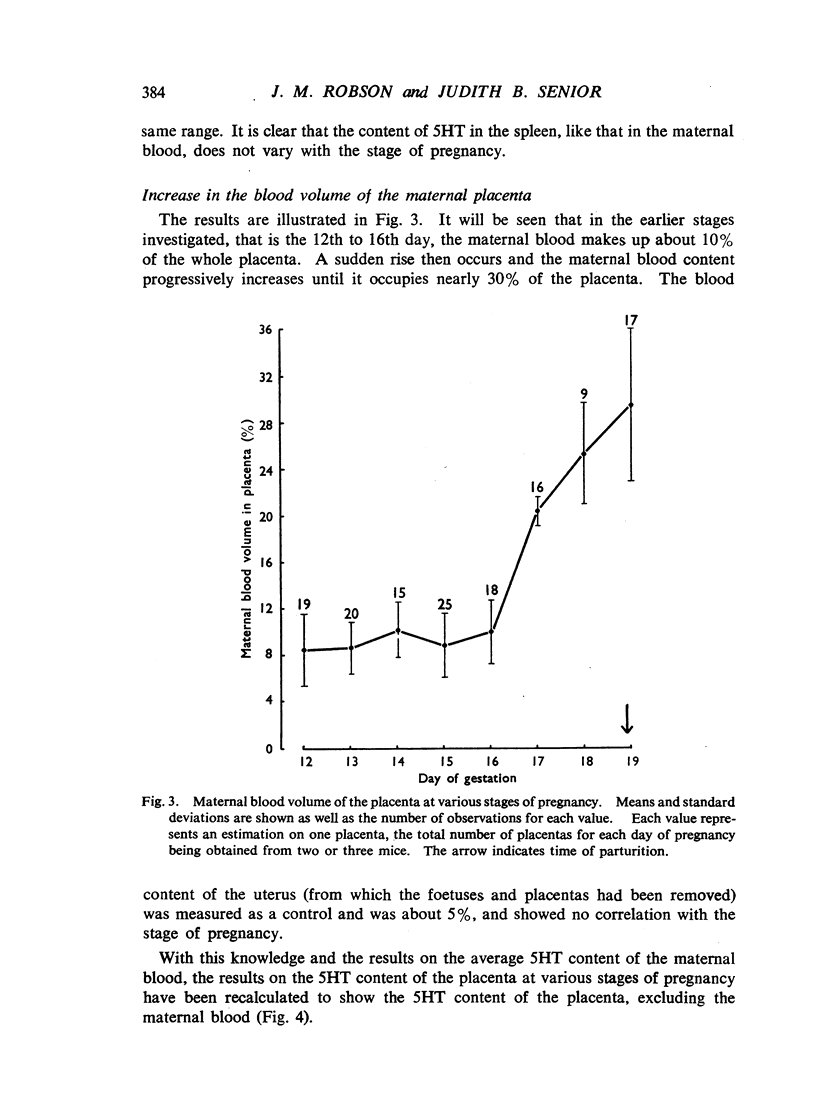

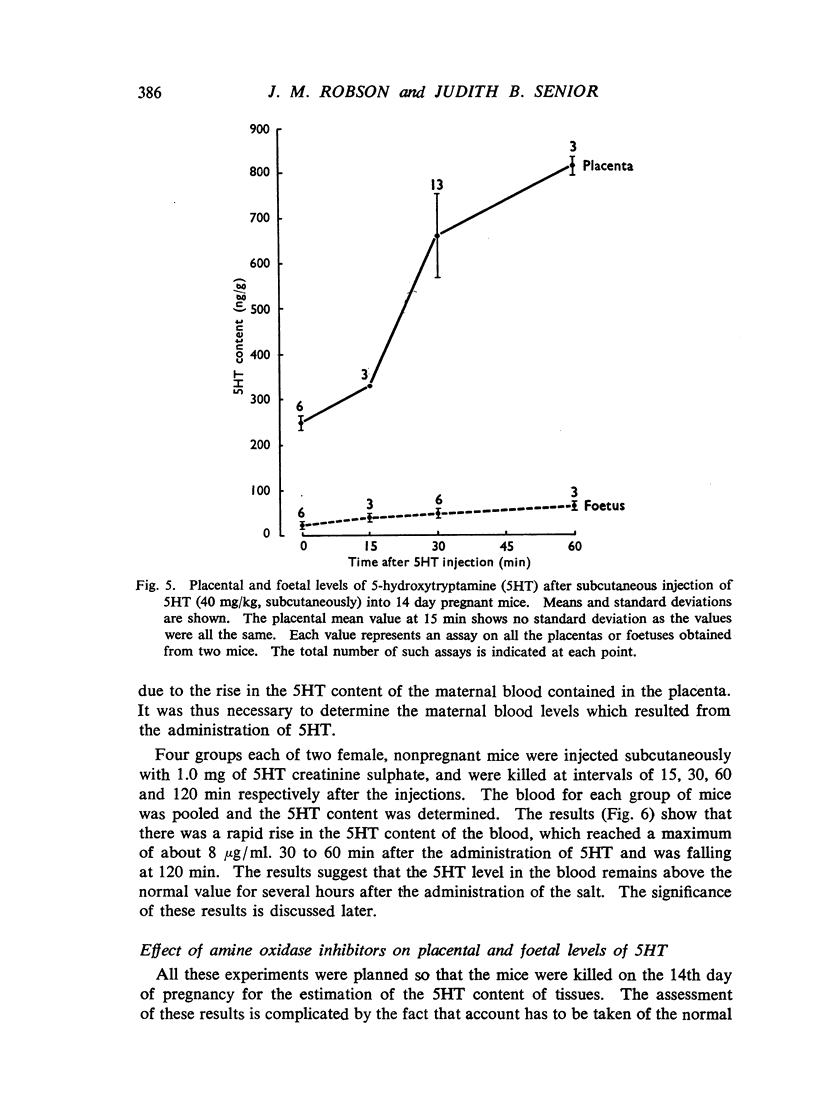
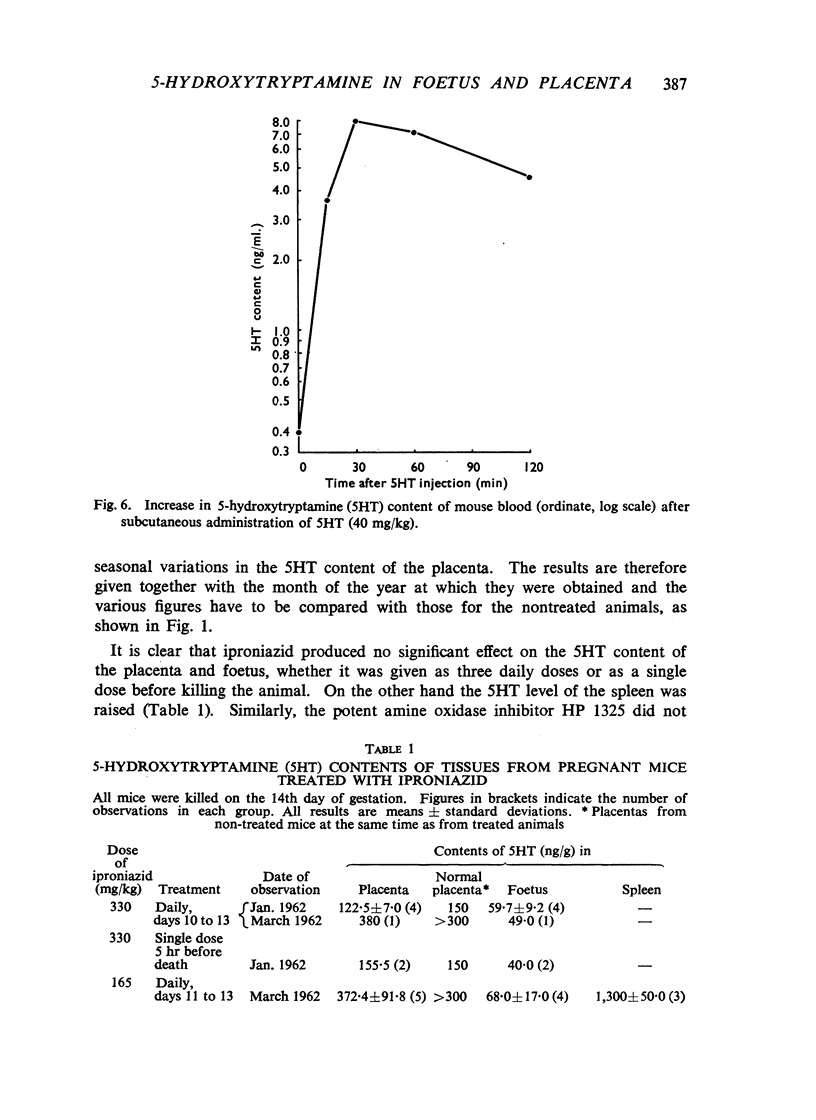
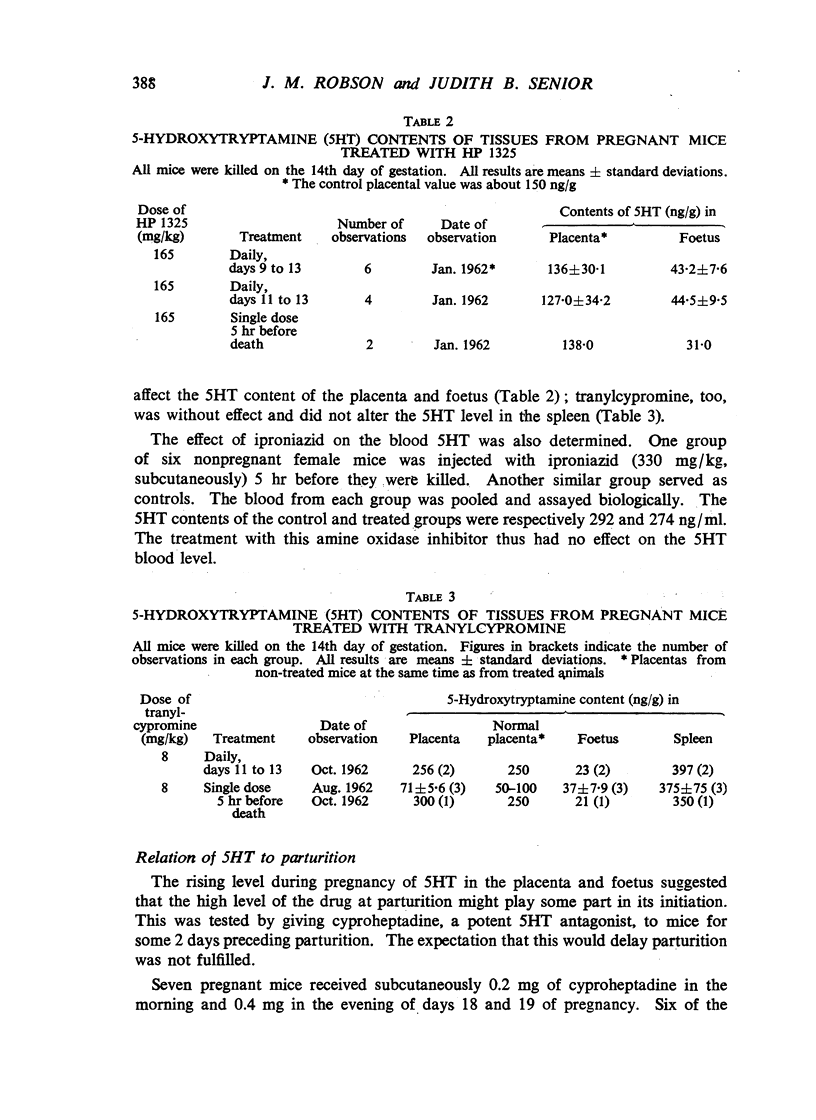

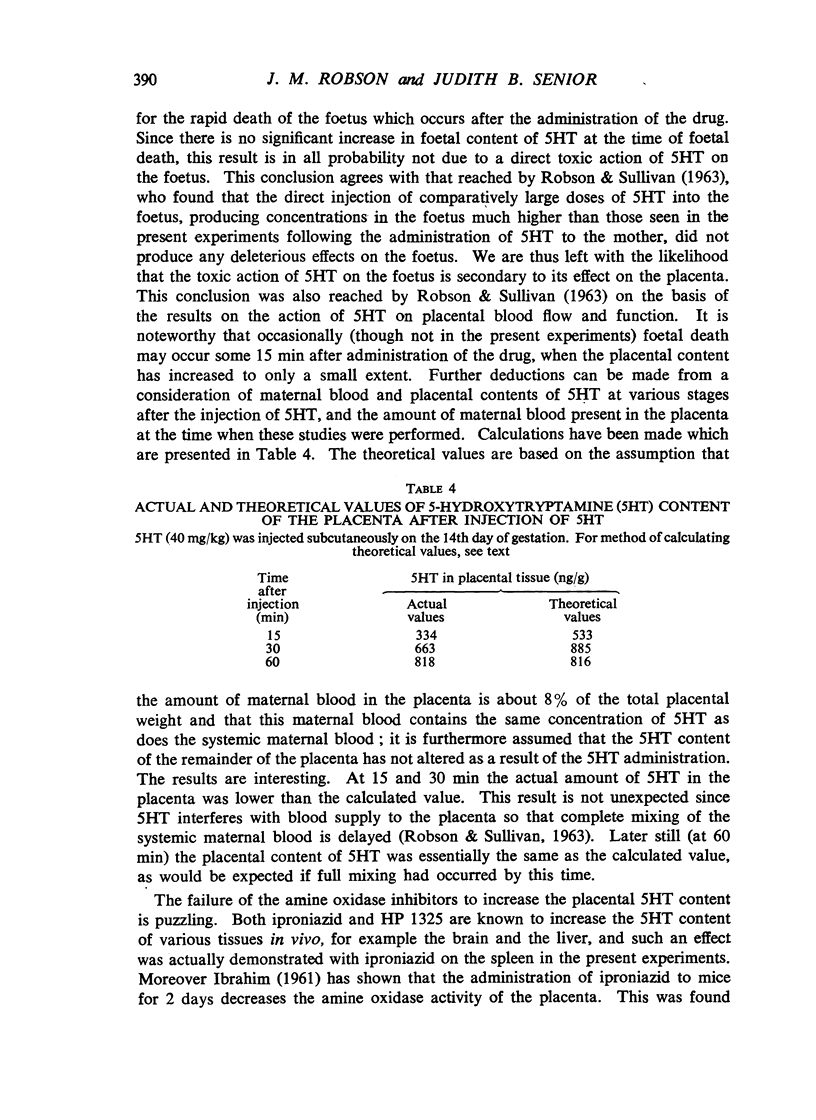
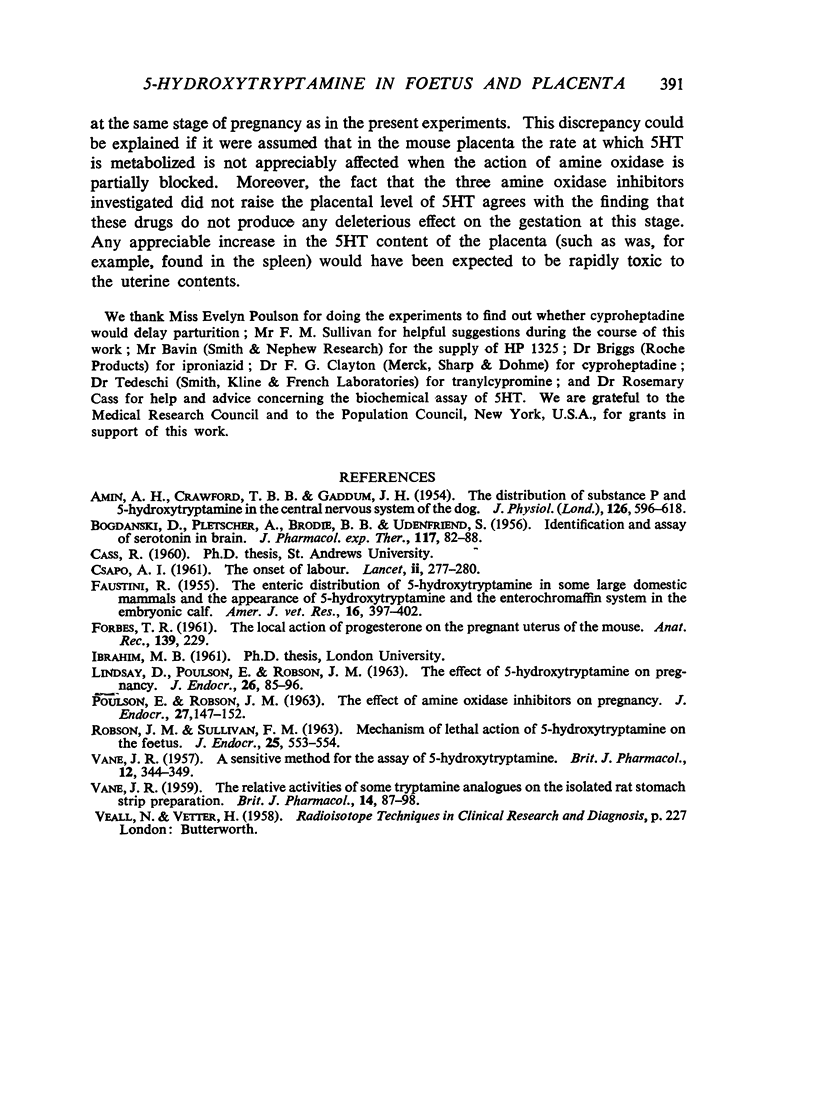
Selected References
These references are in PubMed. This may not be the complete list of references from this article.
- AMIN A. H., CRAWFORD T. B., GADDUM J. H. The distribution of substance P and 5-hydroxytryptamine in the central nervous system of the dog. J Physiol. 1954 Dec 10;126(3):596–618. doi: 10.1113/jphysiol.1954.sp005229. [DOI] [PMC free article] [PubMed] [Google Scholar]
- BOGDANSKI D. F., PLETSCHER A., BRODIE B. B., UNDENFRIEND S. Identification and assay of serotonin in brain. J Pharmacol Exp Ther. 1956 May;117(1):82–88. [PubMed] [Google Scholar]
- CSAPO A. I. The onset of labour. Lancet. 1961 Aug 5;2(7197):277–280. doi: 10.1016/s0140-6736(61)90576-1. [DOI] [PubMed] [Google Scholar]
- FAUSTINI R. The enteric distribution of 5-hydroxytryptamine (enteramine, serotonin) in some large domestic mammals and the appearance of 5-hydroxytryptamine and the enterochromaffin cell system in the embryonic calf. Am J Vet Res. 1955 Jul;16(60):397–400. [PubMed] [Google Scholar]
- LINDSAY D., POULSON E., ROBSON J. M. The effect of 5-hydroxytryptamine on pregnancy. J Endocrinol. 1963 Mar;26:85–96. doi: 10.1677/joe.0.0260085. [DOI] [PubMed] [Google Scholar]
- POULSON E., ROBSON J. M. THE EFFECT OF AMINE OXIDASE INHIBITORS ON PREGNANCY. J Endocrinol. 1963 Nov;27:147–155. doi: 10.1677/joe.0.0270147. [DOI] [PubMed] [Google Scholar]
- ROBSON J. M., SULLIVAN F. M. Mechanism of lethal action of 5-hydroxytryptamine on the foetus. J Endocrinol. 1963 Jan;25:553–554. doi: 10.1677/joe.0.0250553. [DOI] [PubMed] [Google Scholar]
- VANE J. R. A sensitive method for the assay of 5-hydroxytryptamine. Br J Pharmacol Chemother. 1957 Sep;12(3):344–349. doi: 10.1111/j.1476-5381.1957.tb00146.x. [DOI] [PMC free article] [PubMed] [Google Scholar]
- VANE J. R. The relative activities of some tryptamine analogues on the isolated rat stomach strip preparation. Br J Pharmacol Chemother. 1959 Mar;14(1):87–98. doi: 10.1111/j.1476-5381.1959.tb00933.x. [DOI] [PMC free article] [PubMed] [Google Scholar]


